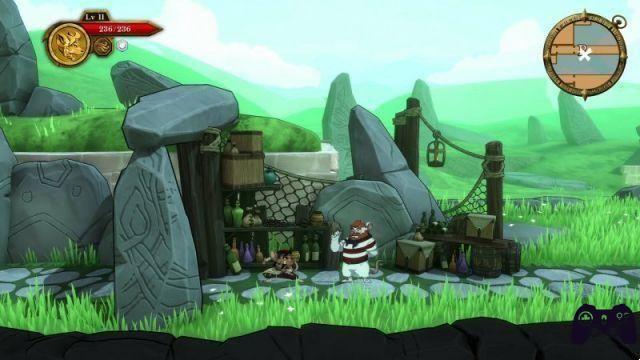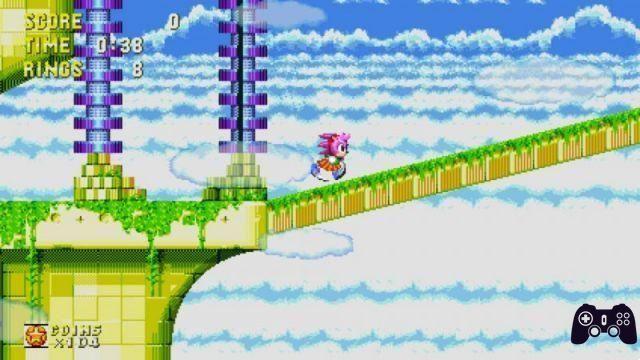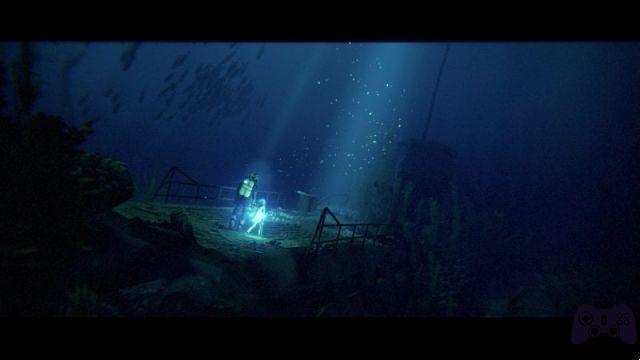Throughout its nearly 20-year history (the first chapter is a 2004 visual novel called Fate/Stay Night), the Fate series has built a devoted audience of fans. Between video games, manga, anime, movies and television series, this universe has a lot to offer those who love it, but its latest addition, Fate/Samurai Remnants, seems more aimed at expanding the audience of this saga than at satisfying its most devoted followers.
Developed by Tecmo Koei, more precisely the division Omega Force Famous for Dynasty Warriors (and it shows), this game is full of references to the saga, including the legendary Saber who acts as the protagonist's adventure companion, but is decidedly more disconnected from the greater narrative universe than in the past. This is good news for those approaching the world of Fate for the first time, as nothing is taken for granted and, once this excellent hack and slash experience is over, you will have many ways to expand the stories and mythologies you will encounter. here.
The ritual of the crescent moon

We are in Japan, in the fourth year of the Keian era (1651), during the uprising of the same name. A long time has passed since the end of the turbulent and bloody Sengoku period, and the city of Edo (former Tokyo) is finally at peace. However, in the context of this period of tranquility and prosperity, the Holy Grail War is underway, a secret battle that is the common thread of all the chapters of the Fate saga and fought by the masters and the heroic spirits or " servants" evoked by them. The beauty of Fate/Samurai Remnant, then, is that among many poetic licenses you can interact with real historical figures such as Miyamoto Musashi (a legendary ronin famous for his two-sword fighting technique) or Takao Dayu, a high-ranking courtesan who went down in history thanks to Kabuki theater. The protagonist is also based on a historical character: his name is Miyamoto Iori, a young man from Asakusa, adopted son of Miyamoto Musashi and his student who, in the game, is involved in the Ritual of the Crescent Moon, a tournament in which Seven masters and seven servants must face each other in life and death battles for their wish to be granted.
After meeting your servant, Saber, you will begin to explore Edo, face your first enemies and discover more about the opponents that await you in the Ritual. Each of them has their specific servant: there is an archer, a spearman, a horse knight, a mage, a berserker, an assassin and a swordsman, an archetype to which Saber belongs. This classification, then, also serves to frame the rebel servants, allies that you can recruit (and control in combat) by exploring the streets of Edo or by fulfilling specific requirements or completing side missions. These rogue servants will join you in battle as you fight your way through the other contenders in the tournament. In addition to being a musou Fate/Samurai Remnant is a visual novel and that means a lot of dialogue dubbed into Japanese with English subtitles (Spanish not available). In these sections, in addition to the explanations about how the tournament works, the powers and the narrative universe, you will build your relationships with the characters in the game, in particular with Saber, your servant and main ally in this battle.

There is a command to fast forward or skip narrative moments, but we advise against it because the beauty of this game also lies in its narrative side and its wonderfully animated cutscenes. To have an experience that perfectly mixes anime and video games, try not to skip the complete animated introduction with the original song that starts every time you start the game, it will be like starting an episode of an anime in which you control the main character. .
Combat and exploration

In Fate/Samurai Remnant you will mainly do two activities outside of the visual novel sections: exploring and fighting. The first of these two sections is easily the weakest part of the game. The exploration of Edo's neighborhoods does not take place on a single map and is not particularly inspired either. Wandering through the streets full of computer-controlled characters is quite boring and repetitive also because more than the streets of a metropolis, what we will cross seem like linear paths with some detours to connect one scenario with another. However, as you explore, you can pet many dogs and cats different, a joy for lovers of Japanese species. To keep you company while you explore there will always be Saber, with whom you will often exchange jokes, since the cheapest way to regain health (in addition to medicines that can be used in combat and that can be purchased from specific vendors) is to stop. at the stalls and indulge in some delicacies.
Fate/Samurai Remnant's combat, however, is extremely multifaceted, constantly switching skins. When you find yourself facing hordes of common enemies, you will have something in your hands the most classic of musou: The most basic of combos will be enough, without activating any power, to hit almost all enemies at the same time and send them to the ground or into the air. However, the sections where there are only minor opponents to kill are very sporadic, most battles will have a boss in the center and these enemy units really hurt, especially when you have to face the other participants in the Ritual of the Crescent moon. .

In battle you will spend most of your time controlling the protagonist, Miyamoto Iori, who fights using his twin swords, alternating different stances, each with their own unique and elementally inspired characteristics. For the first hours of the game we recommend the water one because with its attacks it is much easier to counteract the "enraged" state of normal enemies and bosses. In fact, when you see them surrounded by a red halo you will have to hit them with a special charged attack to avoid suffering a direct hit and the water ones are the most intuitive to activate. In addition to swords, Iori has elemental magic at his disposal that he can activate using gems collected during exploration. So, during most of the fighting, your Servant will be controlled by artificial intelligence and will attack along with you but you can command him to deliver special hits, including a final one that deals a lot of damage. In particular conditions you can take control of Saber during battles to use her swords which, being of much higher levels than those of the protagonist, really hurt a lot.

There's a leveling system, a skill tree for Iori and Sabre, and the ability to upgrade your sword components so they deal more damage. The progression system is simple and intuitive. and during the prologue all aspects will be explained to you. During the game, then, you will be able to recruit the rebel servants that we mentioned before, a fundamental component to survive the most difficult battles. These characters (belonging to the game's seven archetypes) will be added to your team, becoming a third ally on the battlefield controlled by artificial intelligence. Before each battle you will have to choose Iori's elemental fighting style, her magic, which special shots to use for Saber, and the most suitable rogue servant. Enemies have many ways to shuffle cards with barriers and attack patterns that will drain your stamina as you dodge. Fighting in this game requires the right level of concentration and a healthy dose of arrogance which, when combined perfectly, provides a lot of fun.
Conclusions
Tested version PC with Windows digital delivery Steam, playstation store, Nintendo eShop Price 69,99 € Holygamerz.com 8.0 Readers (8) 8.5 your voteThere's a lot to do, fight, and experience in Fate/Samurai Remnant. Fans of the Fate series have a lot to be happy about and those who were fascinated by the aesthetics and combat system will be introduced to this universe in a gentle way, without anything being taken for granted. The narrative moments are many and can last up to 10 minutes, if you want to hear all the lines of dialogue, but they can be skipped and sped up. The scenes are thoughtful, the art style is inspired, and the narrative is full of twists typical of the Japanese storytelling style. Exploration is Fate/Samurai Remnant's weakest point because it's repetitive and adds almost nothing (except petting dogs and cats), while combat is action-packed, layered, and customizable. You either love them or you hate them - those who love them will find many hours of fun in a successful Japanese feudal atmosphere in Fate/Remains of Samurai.
PRO
- Well written and acted story.
- Layered and customizable combat
- Inspired and varied artistic style.
AGAINST
- Definitely detailed narrative moments.
- Useless and empty exploration.
- Not available in Spanish






